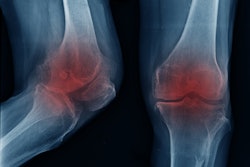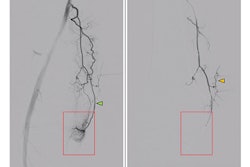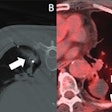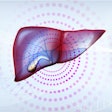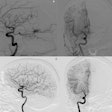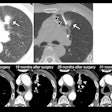Genicular artery embolization (GAE) significantly reduces key biomarkers that drive pain in patients with knee osteoarthritis (KOA), researchers have reported.
The finding is from a trial in which 25 participants experienced improvements in pain, stiffness, and function one year after the procedure and further hints at GAE’s potential as a disease-modifying treatment, noted Bedros Taslakian, MD, of the University of Miami, and colleagues.
“The observed significant decreases in VEGF and IL-1Ra levels at 12 months post-GAE warrant further investigation into their potential roles as objective predictive biomarkers for treatment response and disease modification,” the group wrote. The study was published August 12 in the Journal of Vascular and Interventional Radiology.
Knee osteoarthritis is a progressive and debilitating condition, with an estimated 642 million cases projected globally by 2050. Conservative management of KOA includes physical therapy, weight loss, and pharmacotherapy, while severe cases may require total knee arthroplasty, the authors explained.
For patients with mild to moderate cases who fail conservative therapies and are poor surgical candidates or unwilling to undergo surgery, GAE is a minimally invasive option, with growing evidence supporting its safety and efficacy. Yet the specific biochemical changes the procedure induces, and their long-term impact, require further validation, the researchers noted.
Thus, to provide a deeper understanding of the biochemical mechanisms underlying pain relief in knee osteoarthritis, as well as to evaluate the safety and efficacy of GAE, the group enrolled 25 patients (mean age, 65 years) with significant pain despite more than three months of conservative therapy. Patient-reported outcome measures were evaluated at baseline and at one, three, and 12 months following GAE, while blood samples were collected for biomarker analysis.
According to the results, the technical success was 100%, with no significant adverse events. The clinical success rate --defined as the number of patients who experienced a significant reduction in pain -- was 62%.
Specifically, the mean Visual Analog Scale pain score for the target knee decreased by 48.5% at one month, 50.8% at three months, and 55.4% at 12 months (p < 0.001). Western Ontario and McMaster Universities Osteoarthritis Index pain scores improved by 39.6% at one month, 50.1% at three months, and 43.7% at 12 months (p < 0.001).
In addition, there was a statistically significant decrease in the serum levels of vascular endothelial growth factor (VEGF) and interleukin-1 receptor antagonist (IL-1Ra) at 12 months, the researchers reported.
“GAE is a safe treatment for symptomatic KOA, providing clinically significant pain relief for a subset of patients,” the group wrote.
Moreover, they suggested that the observed reductions in serum VEGF and IL-1Ra levels following GAE may contribute to local pain relief and decreased inflammation in the knee joints.
“The clinical significance of the observed biomarker reductions after GAE requires further investigation to understand long-term effects,” the authors concluded.
The full study is available here.






